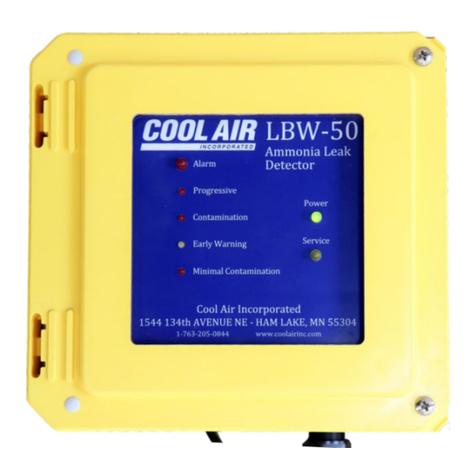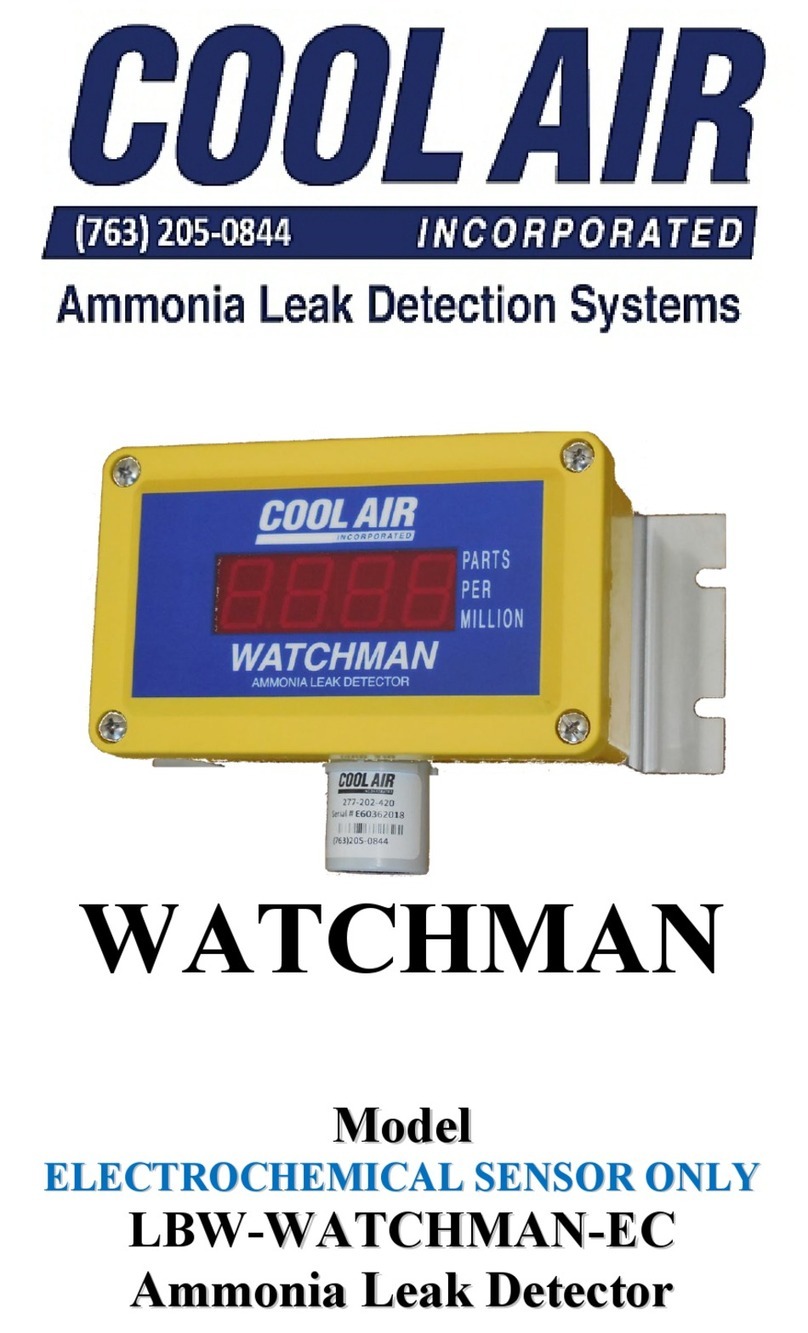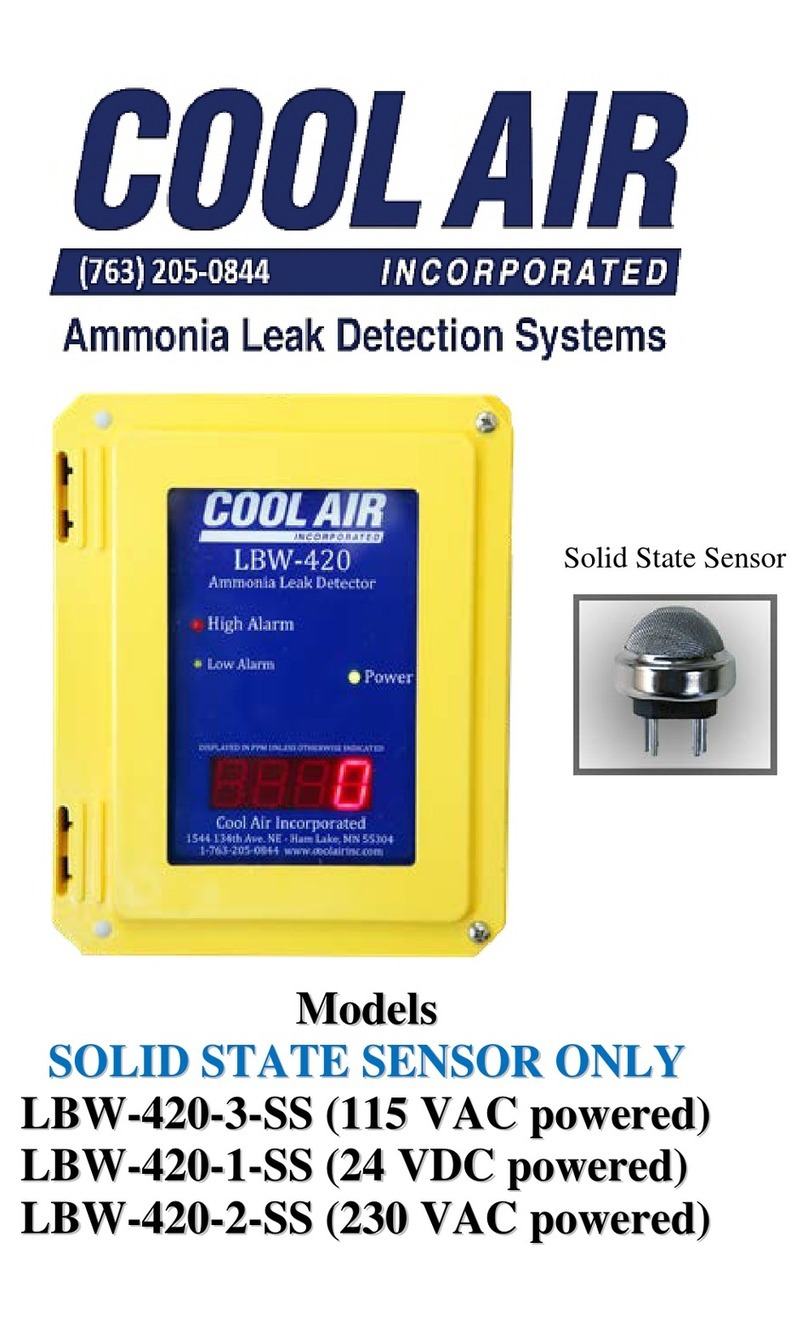
Copyright © 2020 by Cool Air Incorporated. All rights reserved.
T
TA
AB
BL
LE
E
O
OF
F
C
CO
ON
NT
TE
EN
NT
TS
S
S
SP
PE
EC
CI
IF
FI
IC
CA
AT
TI
IO
ON
NS
S.................................................................................................2
I
IM
MP
PO
OR
RT
TA
AN
NT
T—
—R
RE
EA
AD
D
T
TH
HI
IS
S
F
FI
IR
RS
ST
T...................................................................3
C
CA
AU
UT
TI
IO
ON
NS
S..............................................................................................................3
I
IN
NT
TR
RO
OD
DU
UC
CT
TI
IO
ON
N...................................................................................................4
S
ST
TA
AN
ND
DA
AR
RD
D
F
FE
EA
AT
TU
UR
RE
ES
S......................................................................................5
P
PA
AR
RT
TS
S
D
DE
ES
SC
CR
RI
IP
PT
TI
IO
ON
N.........................................................................................6
F
FR
RO
ON
NT
T
P
PA
AN
NE
EL
L
D
DI
IS
SP
PL
LA
AY
Y........................................................................................6
A
AM
MM
MO
ON
NI
IA
A
S
SE
EN
NS
SO
OR
R................................................................................................7
F
FR
RO
ON
NT
T
P
PA
AN
NE
EL
L-
-M
MO
OU
UN
NT
TE
ED
D
C
CI
IR
RC
CU
UI
IT
T
B
BO
OA
AR
RD
D.........................................................7
S
SE
ER
RV
VI
IC
CE
E
S
SW
WI
IT
TC
CH
H
(
(S
SE
ER
RV
VI
IC
CE
E
M
MO
OD
DE
E)
).....................................................................8
T
TH
HE
E
“
“E
EN
NT
TE
ER
R”
”,
,
“
“U
UP
P”
”,
,
A
AN
ND
D
“
“D
DO
OW
WN
N”
”
P
PU
US
SH
HB
BU
UT
TT
TO
ON
NS
S.......................................8
R
RO
OT
TA
AR
RY
Y
S
SE
EL
LE
EC
CT
TO
OR
R
S
SW
WI
IT
TC
CH
H................................................................................8
E
EN
NC
CL
LO
OS
SU
UR
RE
E-
-M
MO
OU
UN
NT
TE
ED
D
C
CI
IR
RC
CU
UI
IT
T
B
BO
OA
AR
RD
D..........................................................11
P
PO
OW
WE
ER
R
(
(L
LB
BW
W-
-4
42
20
0)
)............................................................................................11
P
PO
OW
WE
ER
R
(
(L
LB
BW
W-
-4
42
20
0-
-1
1)
).........................................................................................11
J
JU
UM
MP
PE
ER
R
J
J3
3,
,
A
AM
MM
MO
ON
NI
IA
A
S
SI
IG
GN
NA
AL
L
(
(L
LB
BW
W-
-4
42
20
0-
-1
1
O
ON
NL
LY
Y)
).........................................11
R
RE
EL
LA
AY
YS
S...............................................................................................................12
R
RE
EL
LA
AY
Y
S
ST
TA
AT
TU
US
S
L
LE
ED
DS
S.........................................................................................13
E
EX
XT
TE
ER
RN
NA
AL
L
C
CO
ON
NN
NE
EC
CT
TI
IO
ON
NS
S..................................................................................13
4
4–
–2
20
0
M
MA
A
A
AN
NA
AL
LO
OG
G
O
OU
UT
TP
PU
UT
T................................................................................13
I
IN
NS
ST
TA
AL
LL
LA
AT
TI
IO
ON
N
A
AN
ND
D
S
SE
ET
TU
UP
P...........................................................................17
P
PR
RO
OG
GR
RA
AM
MM
MI
IN
NG
G
A
AN
ND
D
O
OP
PE
ER
RA
AT
TI
IO
ON
N..............................................................18
S
SE
ET
TT
TI
IN
NG
G
T
TH
HE
E
D
DE
ES
SI
IR
RE
ED
D
D
DI
IS
SP
PL
LA
AY
Y
M
MO
OD
DE
E.............................................................19
P
PR
RO
OG
GR
RA
AM
MM
MI
IN
NG
G
T
TH
HE
E
A
AM
MM
MO
ON
NI
IA
A
H
HI
I-
-A
AL
LA
AR
RM
M
A
AN
ND
D
L
LO
OW
W
A
AL
LA
AR
RM
M
S
SE
ET
T
P
PO
OI
IN
NT
TS
S.................................................................................................................19
P
PR
RO
OG
GR
RA
AM
MM
MI
IN
NG
G
T
TH
HE
E
E
EX
XT
TE
ER
RN
NA
AL
L
T
TE
EM
MP
PE
ER
RA
AT
TU
UR
RE
E
S
SE
EN
NS
SO
OR
R
I
IN
NS
ST
TA
AL
LL
LA
AT
TI
IO
ON
N
S
ST
TA
AT
TU
US
S.......................................................................................20
PROGRAMMING THE 4-20 MARANGE ................................................................ 21
S
SE
ET
TT
TI
IN
NG
G
T
TH
HE
E
S
SE
ER
RV
VI
IC
CE
E
M
MO
OD
DE
E
T
TI
IM
ME
EO
OU
UT
T...........................................................21
S
SE
ET
TT
TI
IN
NG
G
T
TH
HE
E
A
AU
UX
XI
IL
LI
IA
AR
RY
Y
R
RE
EL
LA
AY
Y
P
PA
AI
IR
RI
IN
NG
G........................................................22
E
ER
RR
RO
OR
R
C
CO
OD
DE
ES
S.....................................................................................................23
M
ME
ES
SS
SA
AG
GE
E
C
CO
OD
DE
ES
S................................................................................................23
4
4-
-2
20
0
M
MA
A
E
ER
RR
RO
OR
R
I
IN
ND
DI
IC
CA
AT
TI
IO
ON
N.............................................................................23
A
AM
MM
MO
ON
NI
IA
A
L
LE
EA
AK
K
I
IN
ND
DI
IC
CA
AT
TI
IO
ON
N.............................................................................24






























